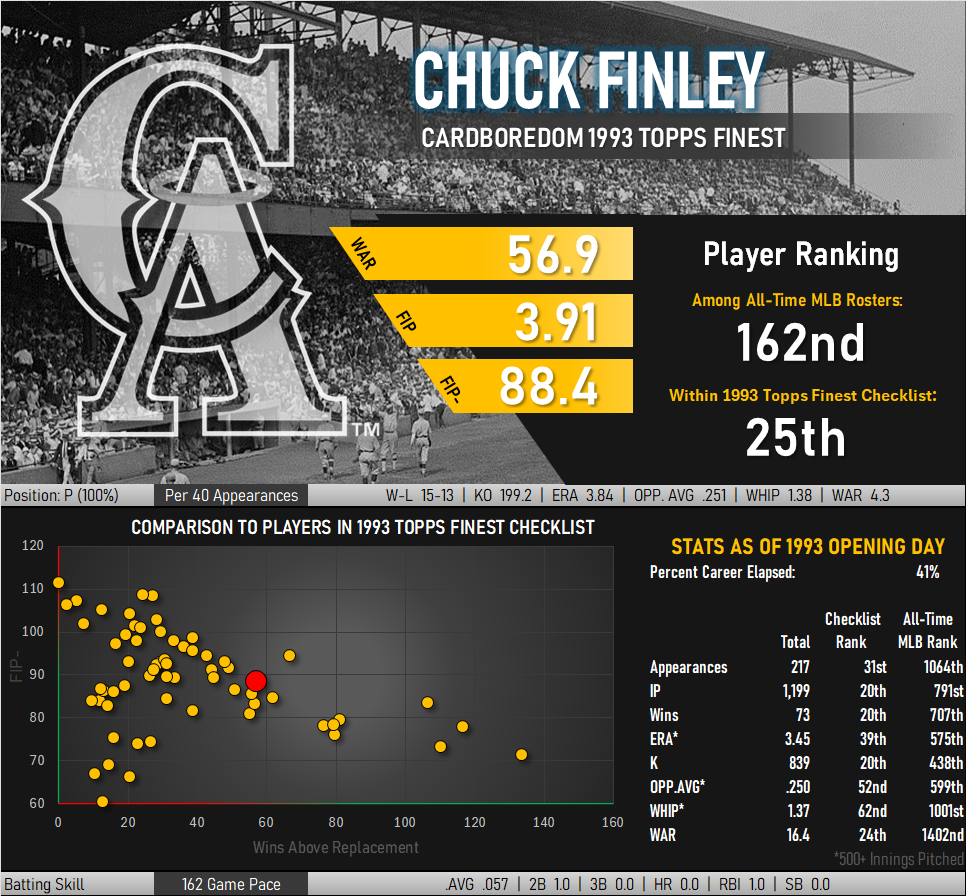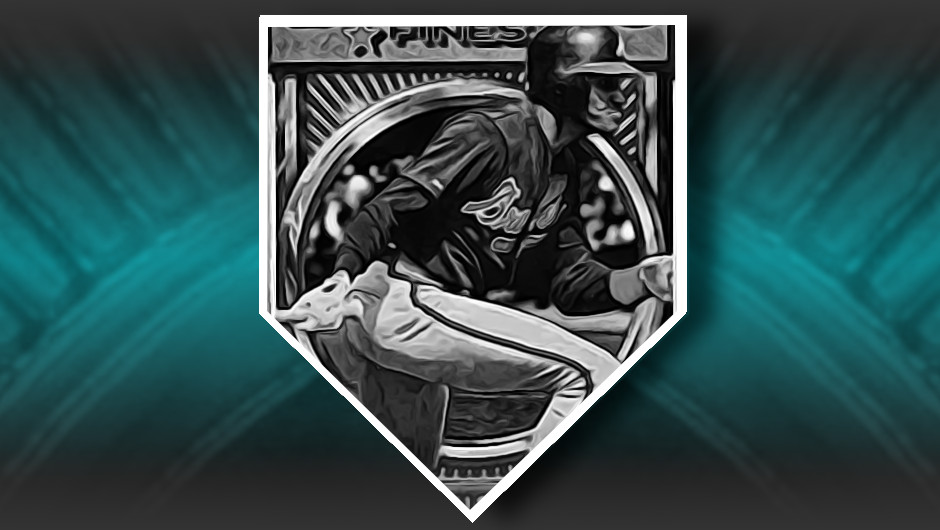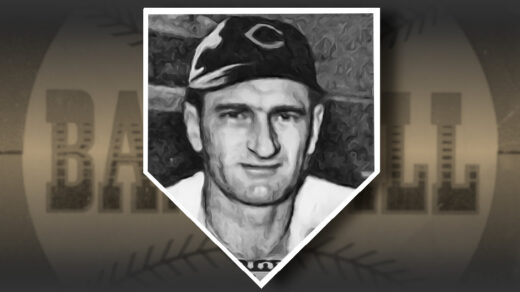A fairly rare occurrence in baseball is a four strikeout inning. It’s not so rare for Chuck Finley, who holds the record with 3 of the 100 instances this has happened in baseball history. When Finley recorded his final 4-strikeout inning in 2000 he accounted for nearly 10% of all recorded instances.
So how did this happen? This fluke of baseball scoring can occur when a batter misses his third strike, resulting in officials scoring the play as a strikeout. However, a catcher must catch the strike for an actual out to be recorded. When a third strike is not cleanly fielded the catcher must tag the batter, who can now sprint towards first base. When batters occasionally make it to first the strikeout remains in the record books but the number of outs has not changed. A pitcher who strikes out the side and allows a baserunner to reach on one of these botched strikeouts has achieved the feat of striking out four batters inside a three out inning.
What kind of pitcher does this? For starters, a pitcher needs to be capable of striking out everyone he faces. Finley certainly fit the bill, averaging more than 7 strikeouts per 9 innings pitched and ending his career with a tally approaching 3,000 K’s. He finished in the top 10 in strikeouts in all but twice from 1989-2000.
Secondly, a pitcher needs a bit of unpredictability in the location of his pitches. Finley specialized in two pitches, a fastball and forkball. Any sufficiently speedy fastball can be a challenge to catch, though most MLB catchers are already up to the task. What tends to get batteries into trouble is keeping batters off with the insertion of the more erratic forkball into the mix. Forkballs are slower than similar pitches and mimic the sharp drop of a curveball as they near the plate. A ball that suddenly changes location obviously induces swings and misses from batters (good for strikeouts) while often bouncing in the dirt (bad for catchers). The result is a bit more confusion at the plate and the occasional batter reaching first base on a strikeout.
Third, both pitcher and catcher need to be a little wild. Finley’s forkball could get away from him and certainly fit this description when he wasn’t completely spot on with it. It didn’t help that his catchers in each of these games were not their team’s primary starters, making it somewhat more likely for a miscommunication or errant throw to occur. Finley’s first 4K inning was caught by Charlie O’Brien, a player that only got into 27 games that season. Inning number two was caught by rookie Bengie Molina who only appeared in 31 games that year. Einar Diaz played caught about half of Cleveland’s games when Finley did this for the third time, though it should be noted that Finley had only recently joined the team and the two may not have fully developed a feel for his pitching style at that point.
Finally, the gameplay situation must allow for four strikeouts to occur. A pitcher who records an out in any other way during the inning negates the possibility of racking up four punchouts. Rules governing the ability to run to first on a third strike due not allow this to happen when there is a runner already present at first and there are fewer than two outs.

Chuck Finley Doesn’t Exist?
That’s the conclusion of a municipal investigation into a library in Florida. A few years ago Finley appeared to have checked out thousands of rarely read titles from a library in Sorrento. Computer records at the library showed him checking out books that were approaching the point at which low readership would prompt the library to remove them from circulation. His activity reset the clock on the books, extending the time they would continue to be stocked on the shelves.
The problem was the ballplayer Chuck Finley never set foot in this library. Two employees created a fake profile to facilitate this resetting of the clock and used details of their favorite pitcher to fill in required fields in the library’s patron database. Perhaps a baseball card can be considered a library card.










